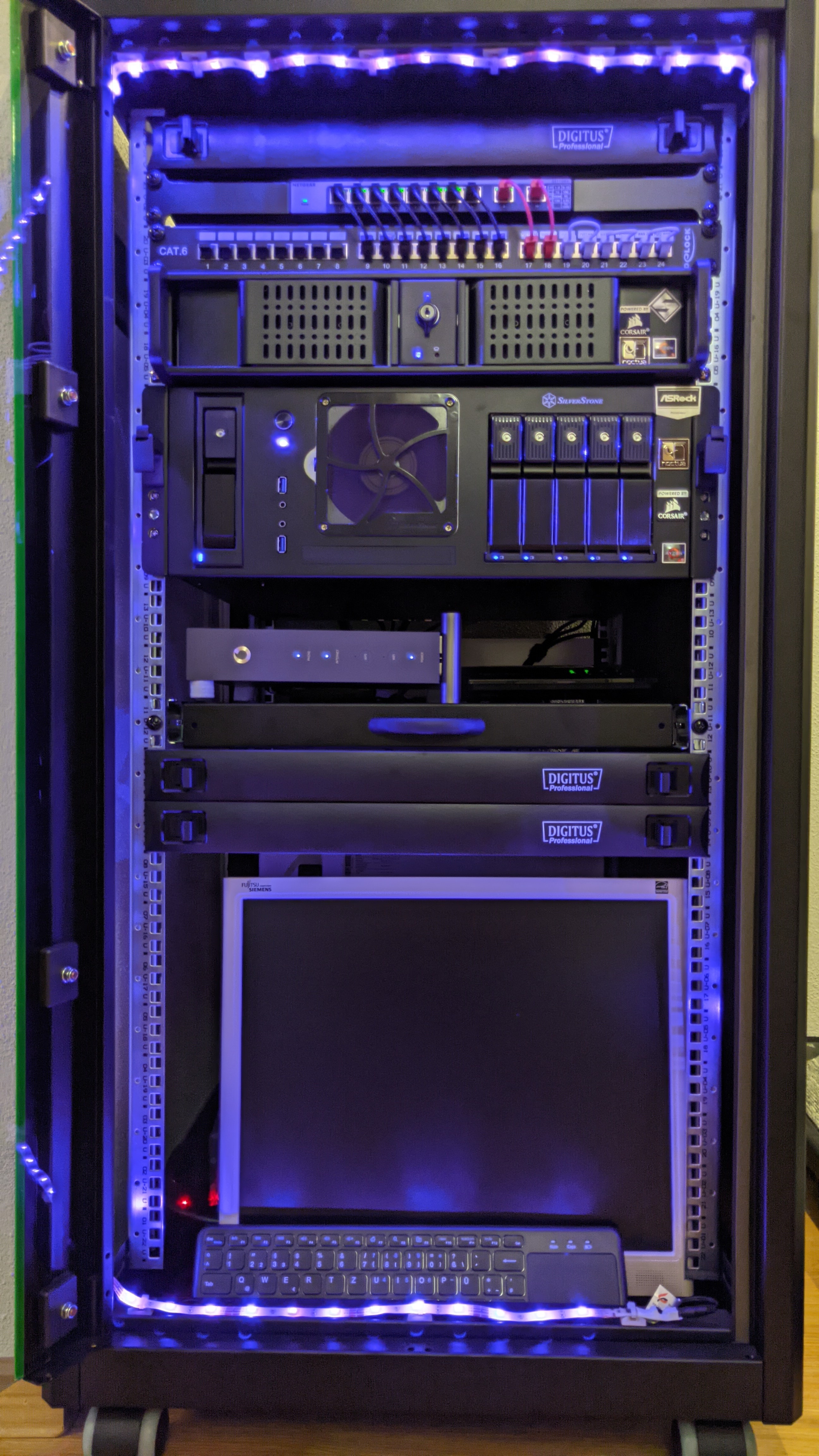

9,3TiByte equate to 10,2TByte. Maybe Ubuntu just rounds up to 11TByte at this point?
I tried it but it's pretty complex compared to tubesync and uses weird af filenames, unusable for media servers
I use tubesync, works great
AV1 (NVEnc) + Opus in webm containers
Tandoor
I also use Proxmox Backup Server to backup my VMs. These and the files of my NAS get copied on one of two 22TB HDDs, which I swap out weekly from my fireproof safe. My PC files get synced on my NAS through GoodSync and my Smartphone NeoBackups via Syncthing. My PC also does a Disk2VHD image every month and TrueNAS keeps daily snapshots for two months.
I lost 2TB of data about 15 years ago, I vowed to never let this happen again
I hope you are doing 3-2-1 backups now
I have two docker hosts which both run Pihole and get synced via gravity. I set those instances as first and second DNS servers in DHCP and on each docker host
I use a Proxmox Cluster and assigned dedicated NICs to my OPNsense VMs (also clustered). I connected the NIC ports I assigned to the OPNsense VMs directly with a cable and reserved it for CARP usage. I can easily download with 1GB/s and the VMs switch without any packet loss during failover, 10/10 would do it again.
I guess you're from Germany too?